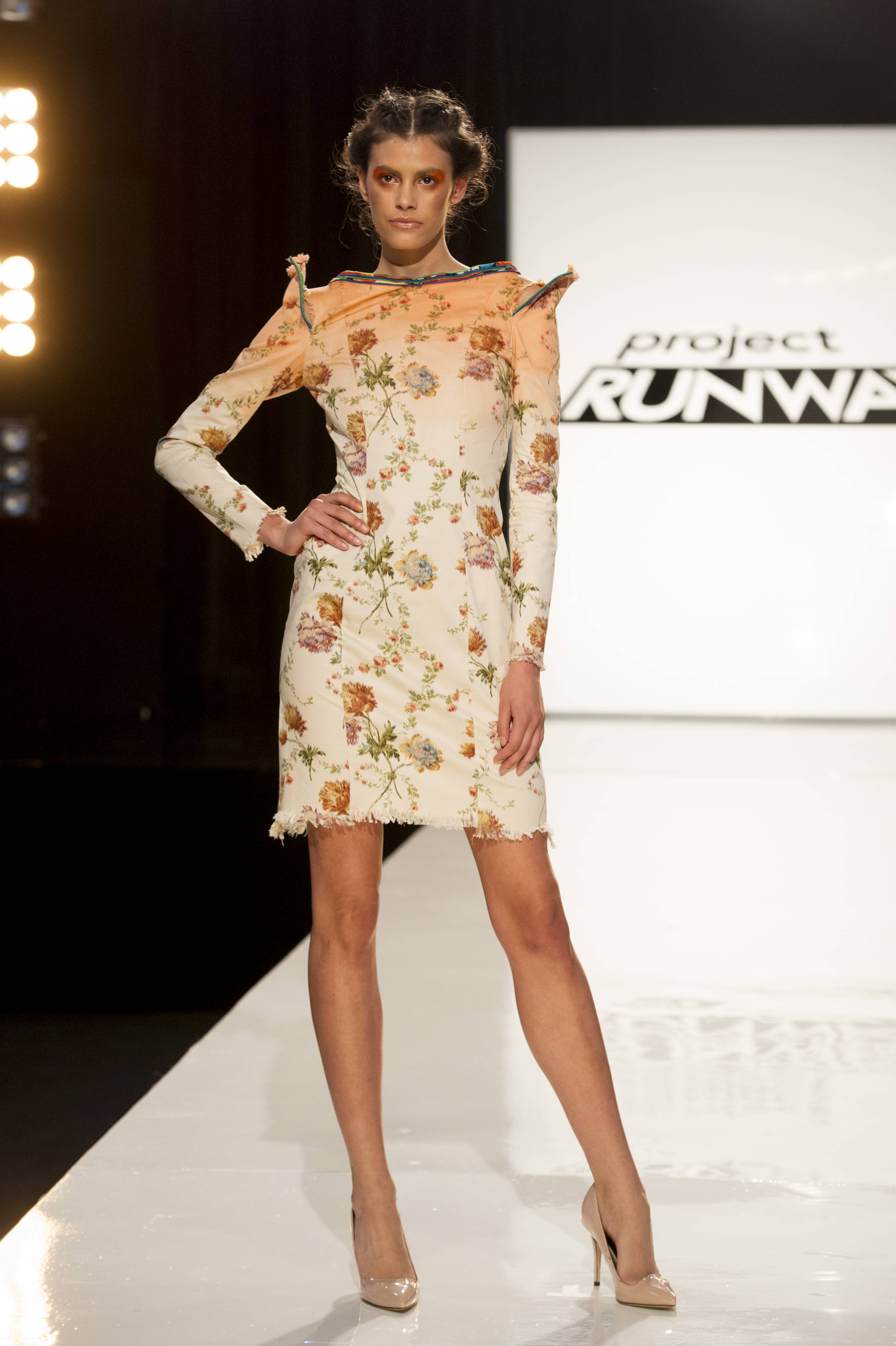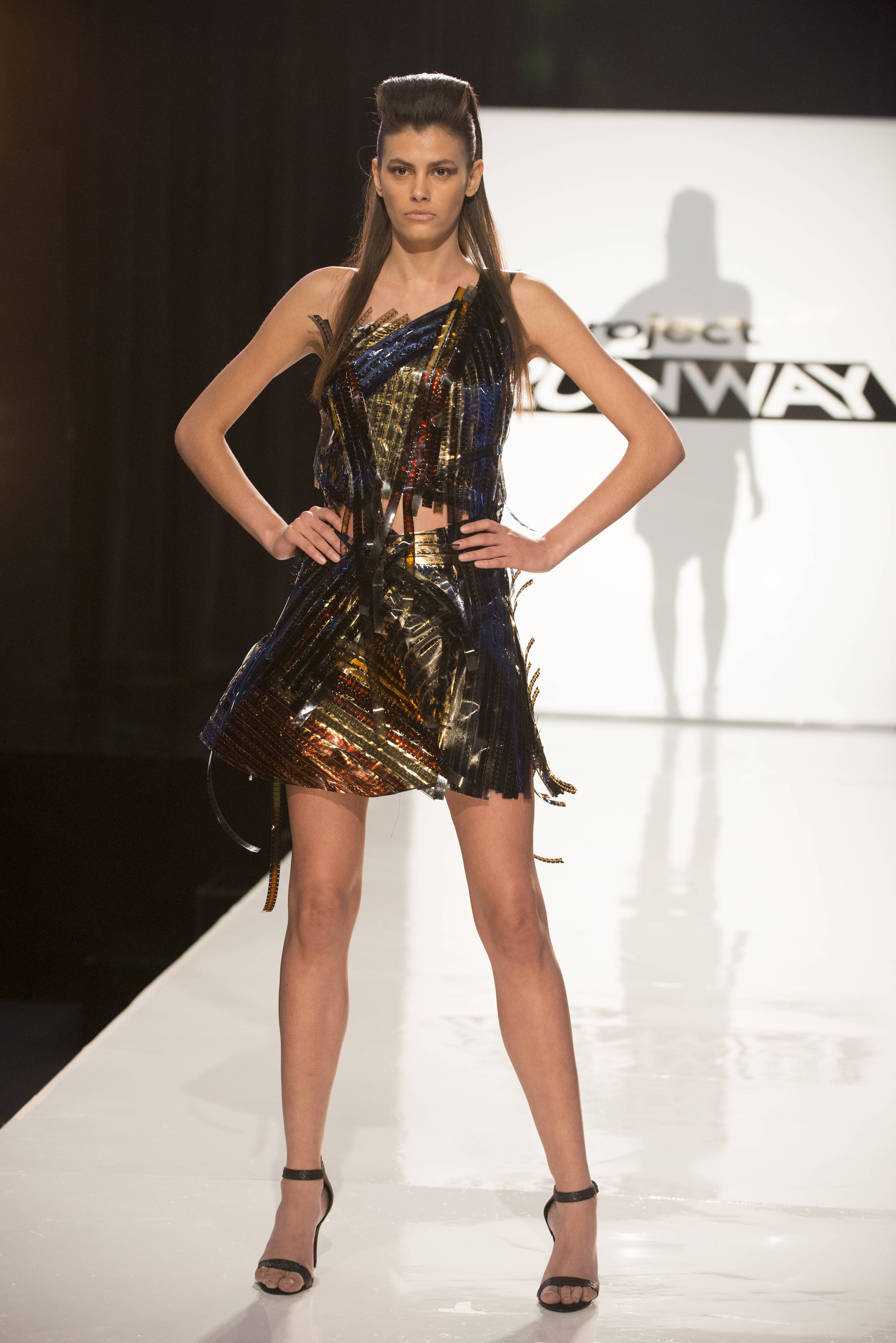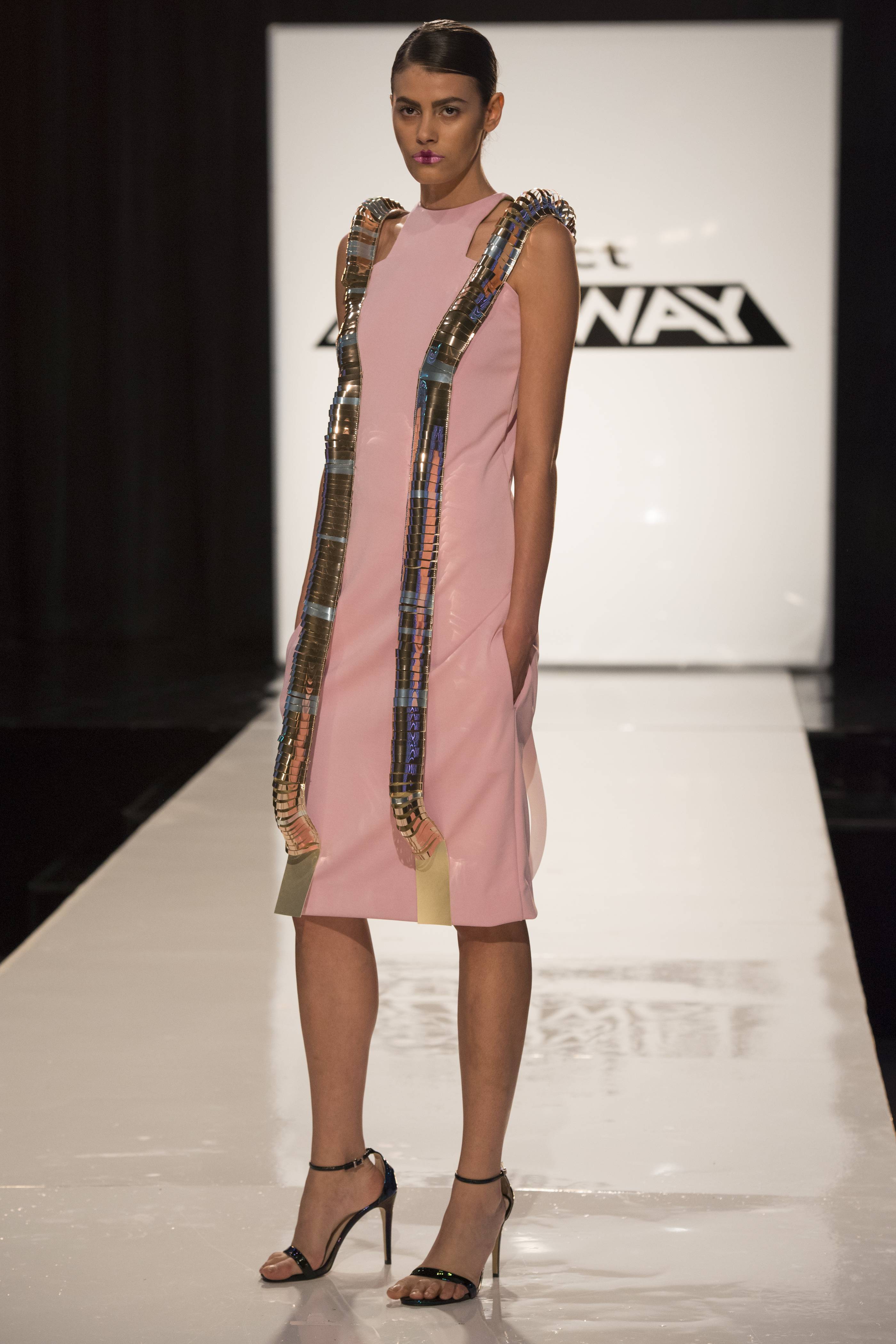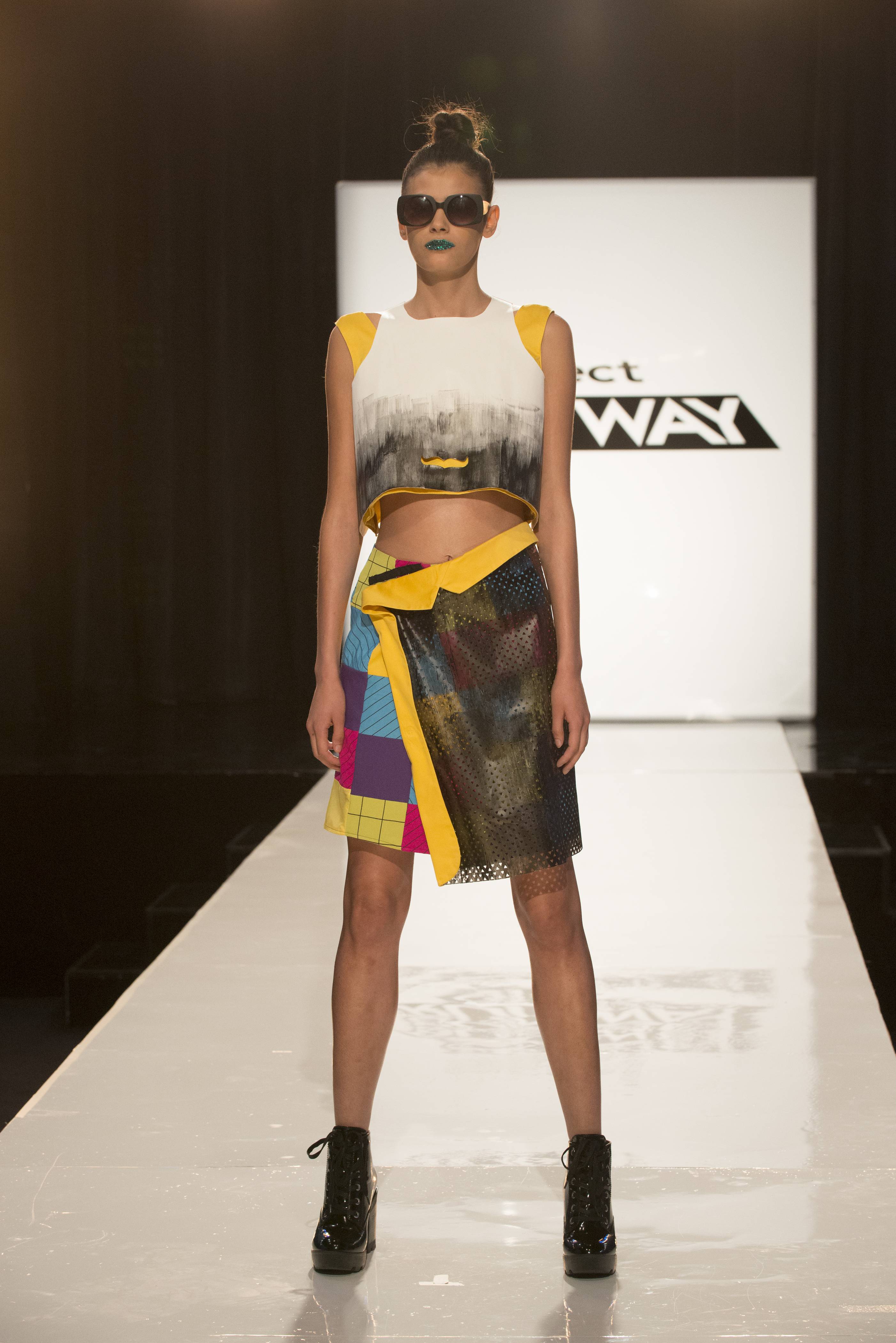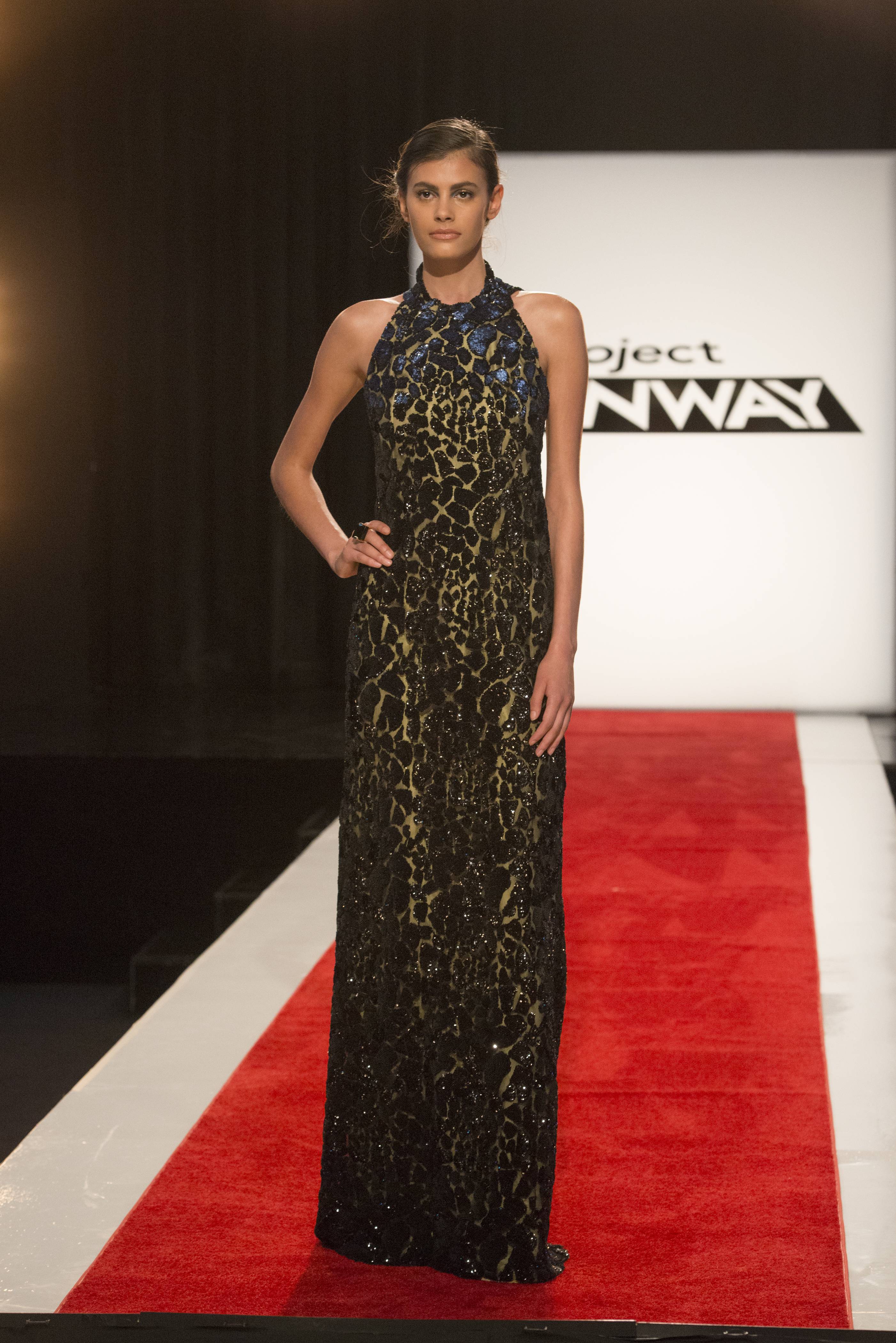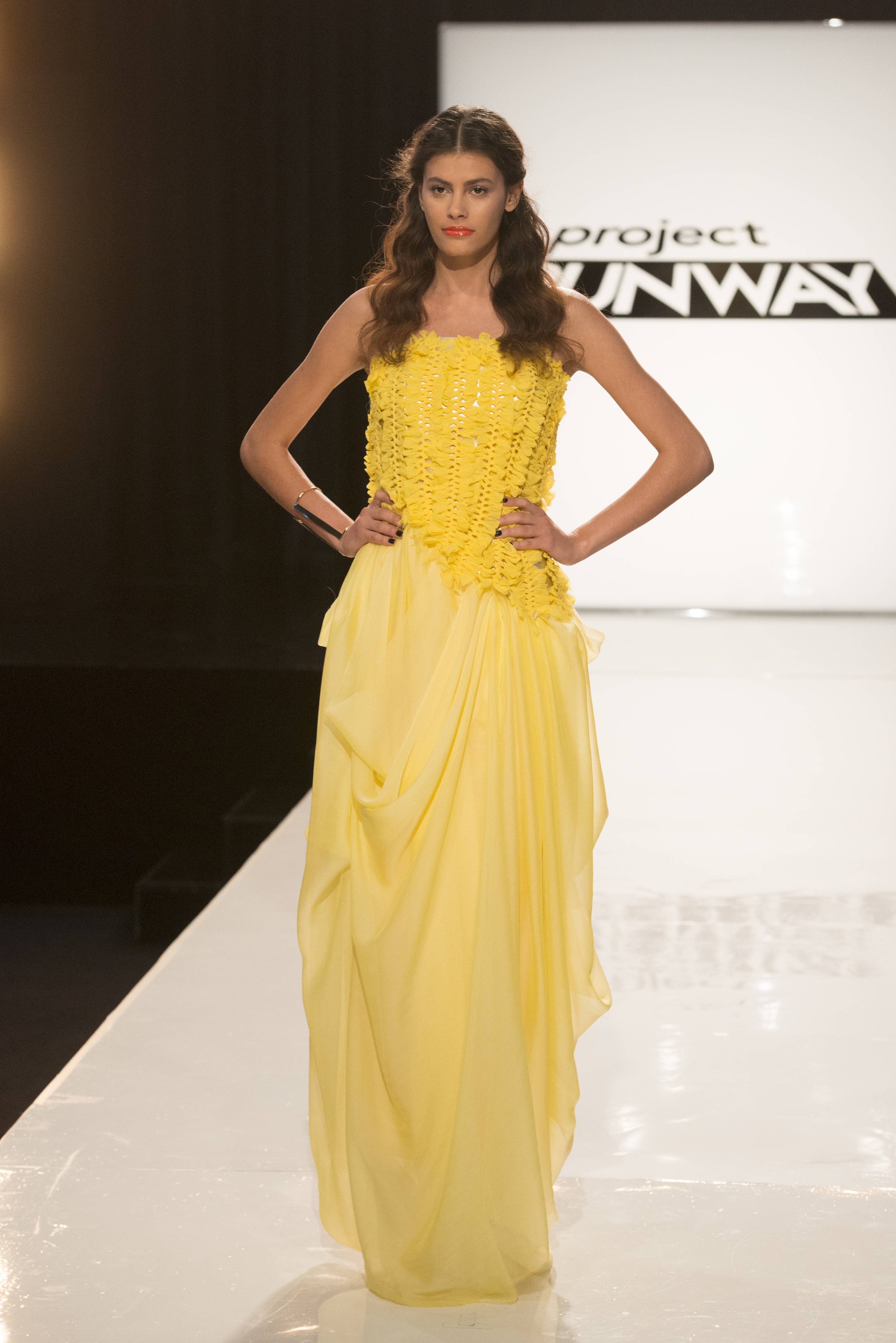I’m not sure if you’ve been keeping up with Project Runway, but Sandhya Garg has been completely dominating the competition. Out of 6 challenges, she’s won 2. From dying to hand-painting to creating her own metallic pleather tubing, Sandhya roots each of her designs firmly in handicraft and art. I’ve been a fan of hers from the beginning and I wait for every Thursday with bated breath to watch her fight off the haters and pull together magic at Mood.
A few weeks ago, I got the chance to sit down with her and talk about the show, her wins, her craft, her heritage, and what it’s like being an NRI designer in America.
Nadya Agrawal (N): First, can I just say, it’s really really exciting to see a Desi on it and doing so so well from the beginning.
Sandhya Garg (S): Oh thank you so much.
N: No, I’m like nerding out right now. I’m trying to keep it quiet instead of being really embarrassing about it.
S: (laughs) Oh no it’s ok, don’t worry about it. I had my mouth open all the time I was there, like any time Tim or Heidi were around.
N: So, now that it’s almost done filming, what’s it like to watch it back?
S: It’s a bit weird to watch yourself on TV. It’s hard to judge yourself and judge the show when you were there and you saw what happened. Obviously the shooting is for 24 or 48 hours and then it’s just condensed into 45 minutes.
N: Did you enjoy your experience on Project Runway overall?
S: I loved it. It was really amazing. It was like one of those rollercoaster rides where you are so scared all the time but yet it’s so thrilling. It was a lot of fun.
N: What was the best bit about being on the show?
S: I think just the fact that you get to show your work and your ideas to this huge audience, obviously Project Runway is seen by everyone all over so just the fact that you can put yourself out there. Then everything about it – the time constraint, how thrilling it is, the challenges. Every bit of it was exciting.
N: What did you find the hardest?
S: I think the hardest part was dealing with contestants who are not mature enough as people. You know, you’re on TV so you can’t respond in a particular way. And if you are quiet it’s seen like an invitation to them to keep doing that. So, just to handle people because it’s like oh my God, like really, this is like basic professionalism and basic respect and when people don’t even get that I think that’s the most challenging part.
N: I mean, it was really hard to watch-
S: (laughs)
N: – as people were really rude and really mean at times. It was just like ‘why is this happening?’ And I think what was really amazing was watching you be gracious about everything and not getting into fights or feuds or anything like that. I was practically cheering during [episode 4] when you finally did shut [Hernan] down. I thought that was amazing.
S: Oh thank you so much. I tried my best and there was this part where he said I was different off camera. But I really don’t see how I can be different off camera – but actually the part where we are off camera is just 7 hours when we sleep. We’re miked at 6 in the morning and miked till 12 in the night or 11 at night and we are on camera.
What I bring in with me is the culture of being nice and being polite. I don’t have to scream to show that I am strong, which is the Indian way. Although every Indian girl is taught to be quiet and not show her emotions but yet the current generation that I’m from has both, like, she is a strong girl but yet she has that grace in her.
N: Personally, I always felt the struggle you were having with him was similar to the one my family has with being in America generally. Like, there is a need to be respectful and stuff but people still feel like they can step all over us.
S: Yes, this is the basic thing because Asians and Indians we don’t say anything when we are disrespected so it’s like we are taken as people who anyone can walk over. And because as Indians we are not supposed to have any ideas or personality… I was like, ‘yeah, enough of this shit, I need to tell him to not behave like that.’ It wasn’t only him, when he would start off others would chime in. And if I didn’t say anything it was like an invitation for everyone else to behave like that.
N: I think it was really really brave to stand up to him and to stand up to him in front of the judges. I was actually going to ask, it was obviously very difficult when you were on the show facing criticism or bullying or all the sort of rude comments directed your way, is it hard to watch that now?
S: It is. It brings back the bad memories and stuff. But it’s fine, it’s going to make me stronger.
N: It seemed like the judges really vibed with your work and seemed to like it almost every turn. What do you think it is about your work that makes them like it so much?
S: I guess it’s the fact that I have a story to tell. And I was repeatedly told that I’m ‘fearless’ when I put forward what I want to. I did not design on the basis of what the judges will like, I designed on the basis of what I wanted to make. So, it was like everyday ‘If I go home for this, it’s me. I’m fine.’
N: A lot of the pieces you put out on the show and before are nodding to or paying homage to your Desi heritage, like the traditional cuts and styles and colors. Do you consider your aesthetic to be a combination of Western and Indian or is there more like leaning toward one or the other.
S: I don’t think my aesthetic is a combination of Eastern and Western. I studied in London and I did research in European fashion and blacks and whites and neutrals are so done now. Color is on trend and it’s been on trend for a long time. And yes, Indians do bring in a lot of color when they design but it’s also these trends where we play with color. It’s not easy to mix colors.
So, in terms of heritage, there’s that and I grew up with a lot of techniques because my mother did a lot of hand crochet and embroidery so I learned to respect a lot of craft and techniques, so that is the point where I’ve learned everything. But how I work with it is not really traditional way of working with it. It’s very modernizing and knowing your craft and then doing something new. So it’s these trends I’ve already built on but translating it into a Western feel.
N: So you said you follow Western design and Western fashion. Who are your favorite Western designers?
S: I really like Mary Katrantzou, she’s London-based. And there’s Manish Arora, he shows at Paris Fashion Week. The list is so long, there are such amazing designers out there. I used to love Marc Jacobs, he used to mix patterns so well. Alexander McQueen, I worked there as well.
N: And my last question, are there any plans to launch your line soon? Because I would personally like to put in an order for those baggy salwar pants and the eff off blouse from your Kathputli collection.
S: I really want to and I have been trying to put my stuff into production. But because of Project Runway, everything has taken a backseat because we are still very busy for a couple of months now. But after that, yes.
Best of luck, Sandhya! We can’t wait to see you turn out even more wins.
Be sure to catch Sandhya and the rest of the Project Runway designers every Thursday on Lifetime.


